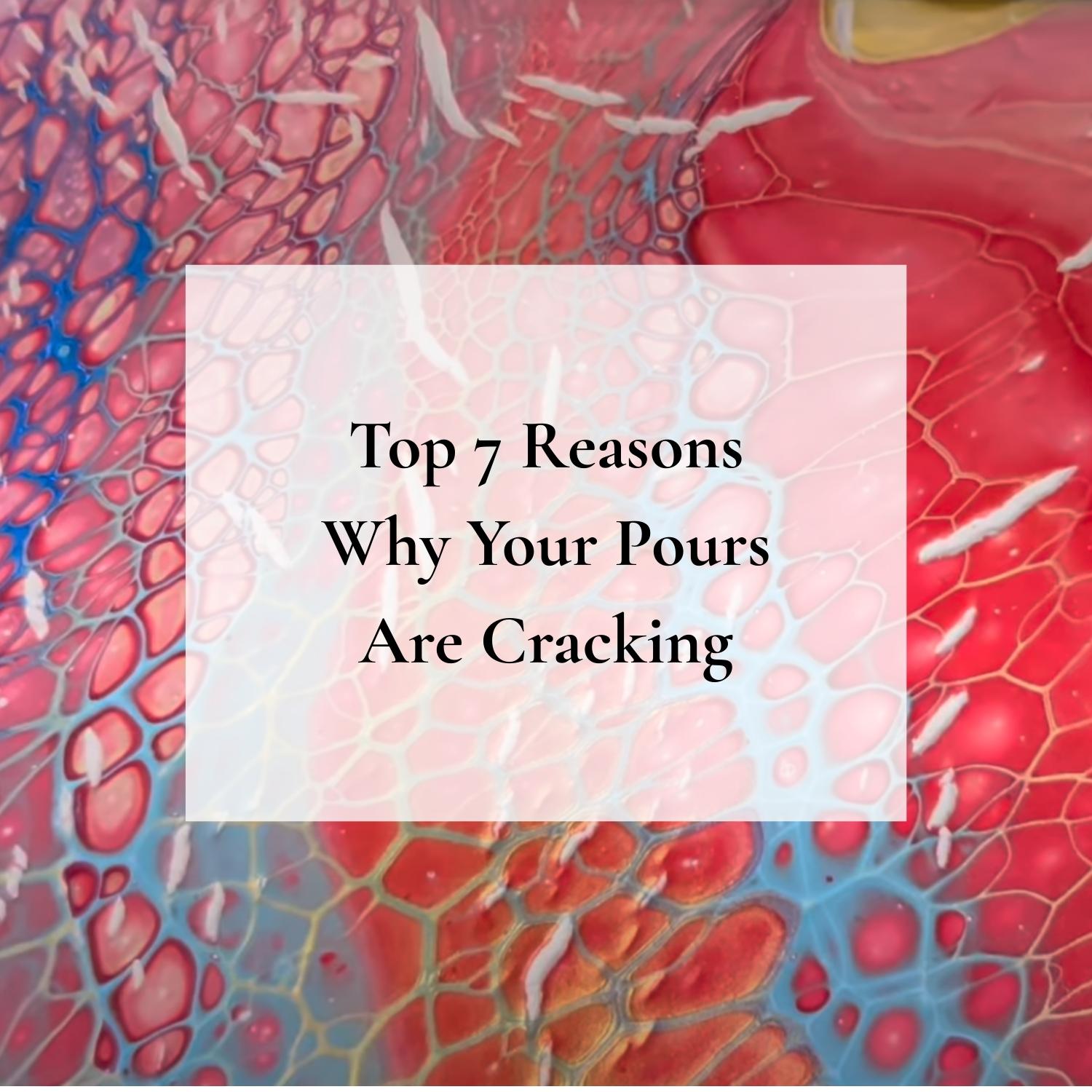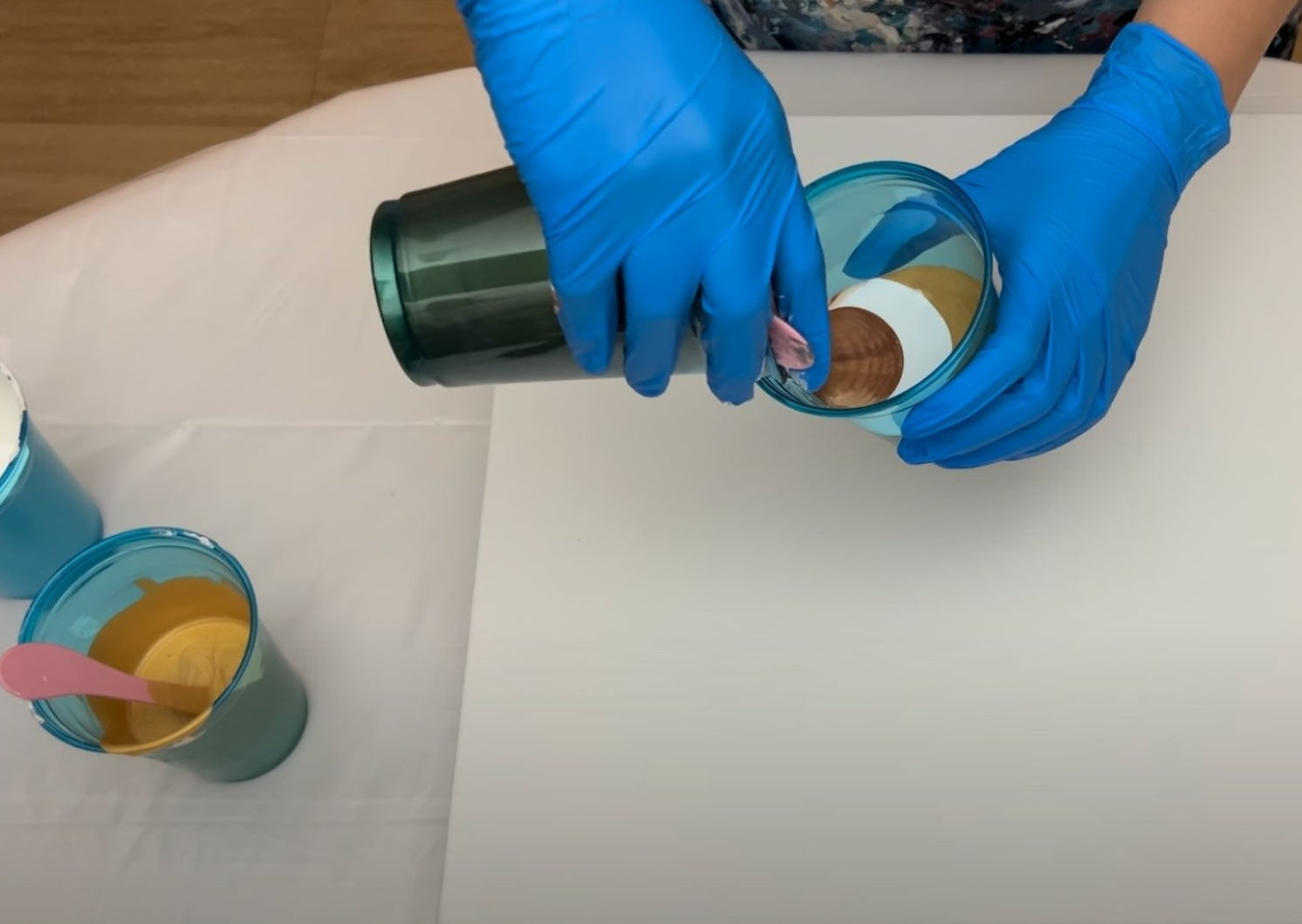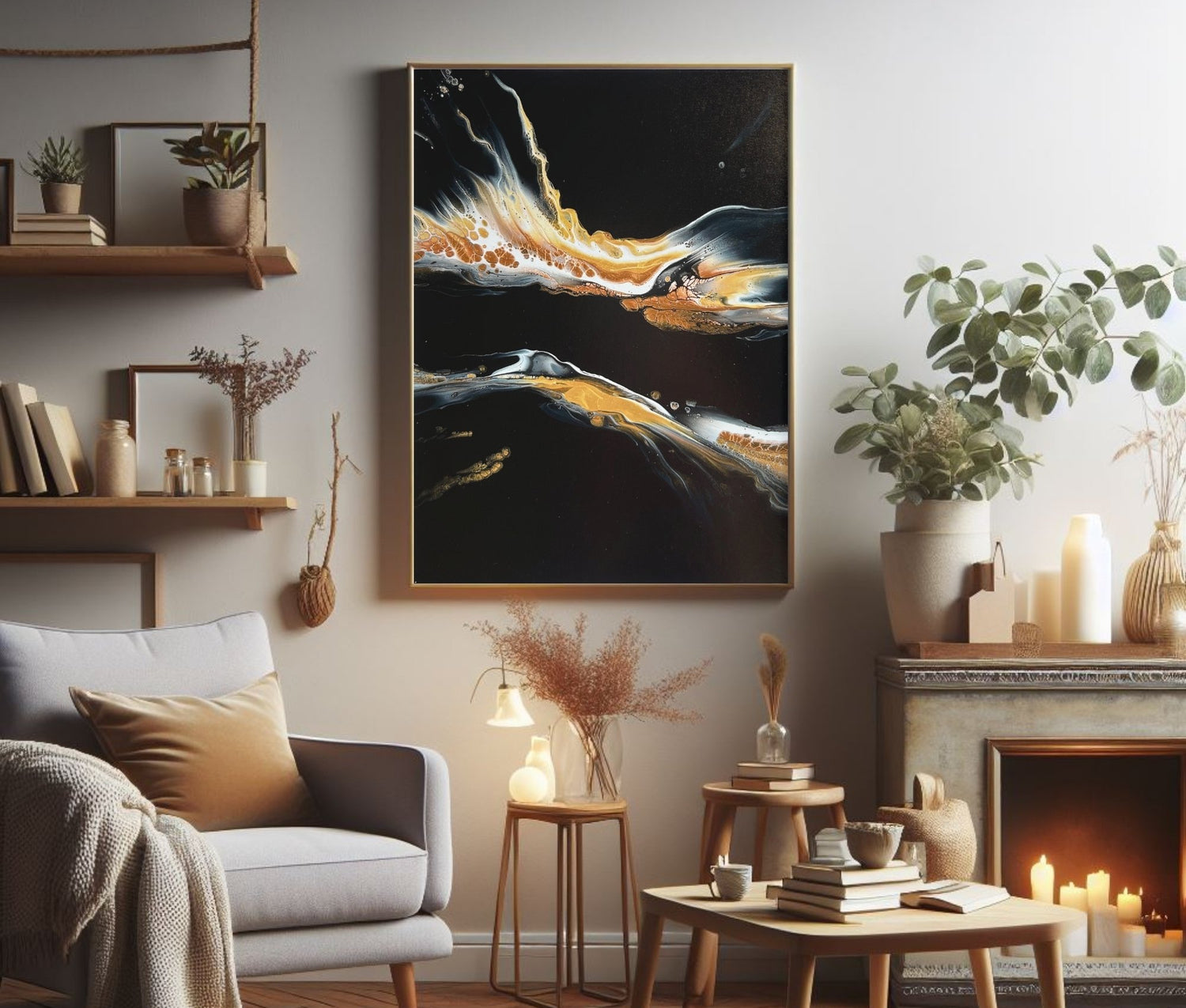Top 7 Reasons Your Acrylic Pours Are Cracking

#1 Type of Paint
If you are using lower quality paints like craft paints, there is a higher chance you’ll get cracks. This is because paints are made up of pigments and binders. The pigments give the paint its color and the binders hold everything together.
The lower quality the paint, the less pigments and binders it contains. So craft paints are often just not high quality enough to withstand being thinned down the way we do in fluid art without cracking.
You don’t have to go out and get crazy expensive paints though! Most student grade acrylic paints are perfectly fine for pouring.
#2 Temperature
When the temperature is too high, it can cause the surface layer of paint to dry before the layers underneath have dried. As the water in the underneath layers tries to evaporate, it has to break through the already dried top layer in order to get out, causing it to crack.
This also happens when there’s airflow on your painting from an open window, fan, or air conditioner.

#3 Thick Paint
Same concept as the last reason, when you leave a very thick application of thick paint on the canvas, the top layer ends up drying way faster than the layers underneath, causing cracks as the rest of the water in the paint evaporates.
If you’re doing a technique that requires thick paint and you’re getting cracks, try stretching out your design by tilting or spinning a little more to get some of the excess paint off the canvas.
#4 Thin Paint
Paint that is thinned down with too much water or that is too thin in general can also crack. When you add a bunch of water, it can break down the binders of the paint to the point where they can’t hold everything together anymore, causing cracks.
If you’re going to mix just paint and water, make sure you’re using a higher quality student grade or professional grade paint to avoid these cracks.

#5 Additives
While adding products like silicone to your paint are generally acceptable and can create some amazing results, adding too much can actually cause cracks in your work.
Any time you add products that either don’t have binders or aren’t formulated to be used with acrylic paint, you run the risk of getting cracks, especially when used in large amounts.
For silicone, try only adding 1-2 drops in the entire cup of only a couple colors. A little goes a very long way.
#6 Uneven Table
Having a level table is sooo important!
A level is this little tool you lay down on your painting surface to check whether or not your table is completely flat.
If it’s not flat: what happens is, as the paint starts drying, the tilt from your table will cause gravity to continue pulling on the drying paint.
Once it’s started to dry and no longer able to move freely, it can crack apart as it moves with gravity.
#7 Different Consistencies
The last big reason for cracks is using paints that are all different consistencies within the same painting.
Of course small differences will likely be fine. I’m talking about big differences.
This is because different consistencies will dry at different rates. So if you’ve got thin paint layered over very thick paint, the thin paint on top will dry much faster than the thick paint underneath.
And same as many of the other reasons mentioned in this guide, as the water in the thick paint tries to evaporate, it will crack the surface layer and also just dry unevenly.

Rolling with the cracks
Although this guide goes over some of the ways to avoid cracks in your pours, sometimes it can be fun to lean into them. Cracks happen to everyone at some point.
You’re a human being 💛
Experiment and make adjustments as you go. Put your heart and soul into your paintings. Just have fun with it!
This is not about perfection.
One fun thing I like to do when I get cracks is paint them gold or any other color that makes sense for the painting. This makes it look unique and often adds interest.
So take these tips into consideration to elevate your pouring skills, but be kind to yourself when you do get cracks or anything else you don’t like for that matter. Like anything, it just takes practice. Make sure you’re having fun along the way!
~ Lauren 💚

Get fluid art tips straight to your inbox
Think, emails you'll actually want to read 💌
